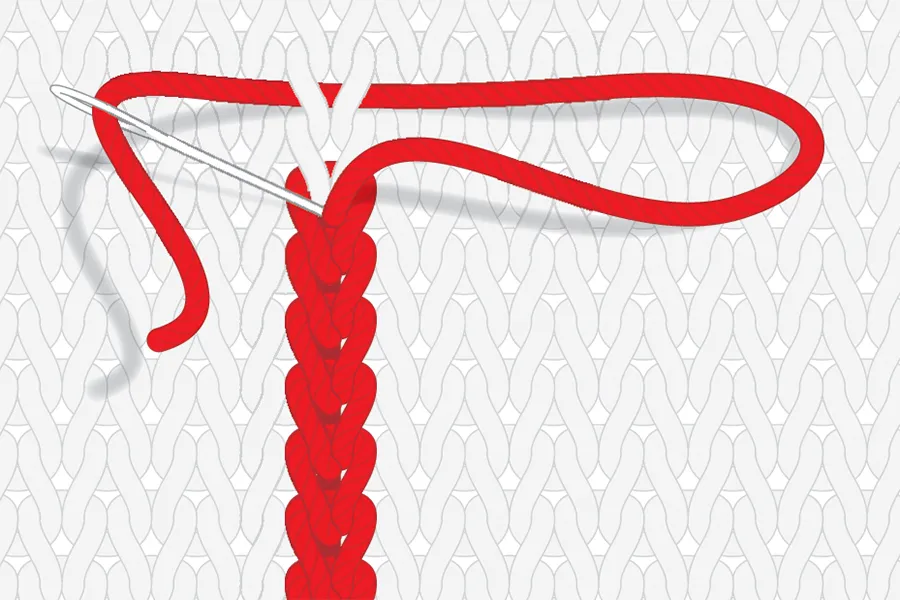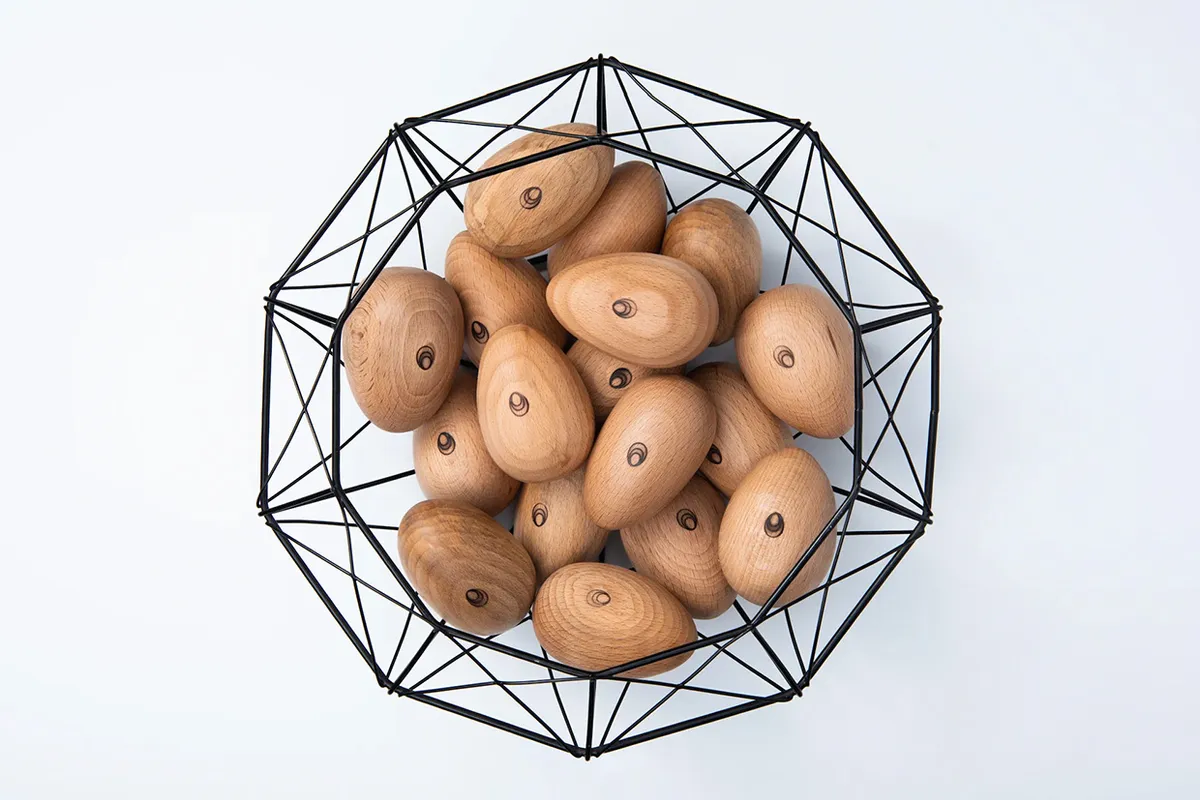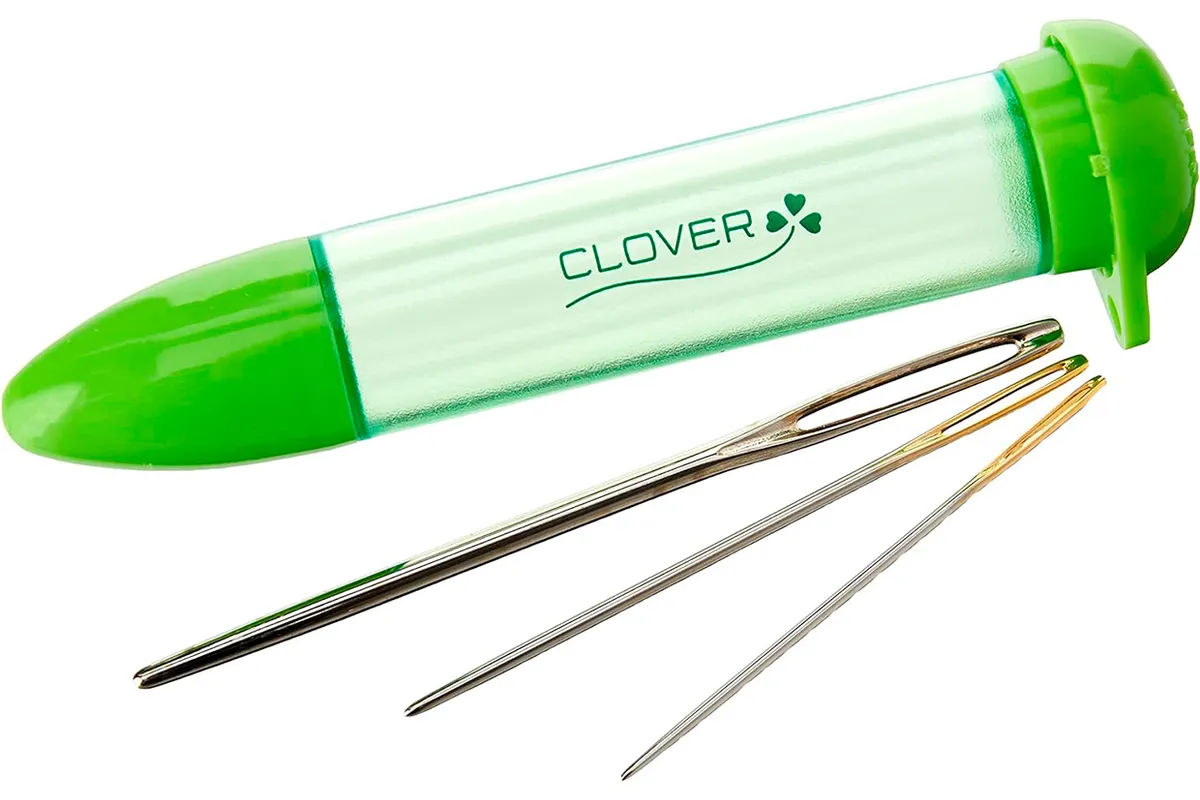Darn good advice! Mend your knits with our guide to darning
Your favourite knitwear goes through a lot. Whether it's a pair of socks you've walked miles in, an everyday jumper that's thinning at the elbows, or an heirloom knit that's been beset by moths, eventually your precious knits will start to show signs of age. So knowing how to fix holes with darning is an essential skill for any knitter.
Unlike in previous generations, you might not have grown up knowing how to darn a sock, but we're here to show you how it's done.
Once you've read our guide, you'll not only be able to mend socks, but pretty much any hand-knits – and shop-bought clothes too. Plus, you'll know all the tools and reference guides you need to get the job done.
Here's what you'll find in our guide to darning:
What is darning?

Darning is the ancient art of repairing holes and areas of wear in knitting or other fabrics. It's traditionally done by hand using a needle and thread, although for non-knitted fabrics it can also be done on a sewing machine.
To tell if a hole or tear is suitable for darning, or if you need a different method, you need to look at where it sits in your fabric.
You can use mattress stitch to repair rips that occur along a seam, and patching for larger holes on elbows or knees, but if the problem area is away from any seams and wouldn't be a comfortable place for a patch, then you need to darn.
There are lots of different stitches you can use for darning, but they all typically involve criss-crossing a thread over the hole, often in a regular woven pattern, in order to cover it up and secure the edges.
'Fine' or 'invisible' darning is all about creating a neat repair that blends in with the original fabric. This might be done by replicating the weave of the fabric using the same type and colour of thread.
How to darn
There are a number of different methods you can use to darn a hole, and the one you choose will depend on the location of the hole, the fabric, and how you want the finished result to look. Here are a few to try:
Stocking or woven darn

The traditional stocking or woven darn involves working long, straight, vertical stitches across a hole, and then weaving horizontal stitches over and under these to create a woven patch.
By varying the type of weave – through skipping different numbers of threads or alternating between colours – you can create all kinds of different patterns.
When working this darn on knitting, it's important to pick up any dropped stitches as you go, to make sure they don't unravel further. You can also see how to do a woven darn on non-knitted fabric with our guide on how to sew a hole.
Learn how to darn a hole with our stocking darn guide.
Scotch darning
Scotch darning creates a strong, rustic-looking patch that's great for covering larger holes. It's particularly popular for knitwear as it blends in nicely with the textures of knitted fabric. You might also see it used as an embroidery stitch to represent knitted or woven items.
If you're familiar with blanket stitch, you'll recognise the technique used here. Take care to keep your tension even so the underlying fabric doesn't pucker, and give it a try as an alternative to woven darning.
Try it out with this video from Practical Embroidery on YouTube.
Swiss darning

Also known as duplicate stitch, you may have seen this technique used to create simple colourwork effects, or to fix small mistakes in Fair Isle knitting – but it can also be a handy mending method.
Swiss darning is ideal for reinforcing worn areas before a hole develops. You simply work new stitches over the thinning area, ideally in a matching yarn. No one will ever know!
Discover how to work Swiss darning with our tutorial.
Darning tools
While you can mend your clothes with whatever needle and thread you have to hand, your fixes will look neater and stand up to more wear and tear if you use tools designed specifically for darning.
Here's everything you need to keep in your dedicated darning toolkit…
Darning eggs, mushrooms and macarons

You might wonder what eggs, mushrooms and macarons have to do with darning! Well, here's the answer – they're all tools used to add tension to your fabric while you stitch, and their names come from their different shapes.
Darning eggs are perhaps the most well-known of the three, and are ideal for working in smaller spaces such as sock toes. Mushrooms have a bigger surface area (and a useful handle to hold onto), so they're good for patches on elbows and knees.
Macarons, meanwhile, are handy space-savers. Their flat design makes them great for storing in a sewing basket, and the groove in the middle can hold an elastic band or spring to help keep your fabric in place. They're also ideal for using with darning looms (more on these later…).
Find out all about darning eggs with our guide.
Darning needles

When darning knitted items, you need a long blunt or semi-blunt needle – the length enables you to work lots of running stitches quickly, in one go, and the lack of sharpness prevents you from splitting your stitches and causing further damage to your knitwear.
For smaller holes, you may find that the tapestry needles you use to seam and finish your knitting are just fine, but for anything bigger, it's worth buying a specific darning needle.
Look for one with a large enough eye to fit your yarn through and a strong, burr-free finish. Most darning needles are sold in packs of three or more, so you'll have a few options to suit different projects.
Find the best darning needles for every mend.
Darning thread

When mending knitted items, it's best to darn using a thread that's similar in weight and composition to the one the item is knitted in.
If you have any leftovers from the original project (or can find a gauge square to unravel), then these are ideal. In fact, some knitters plan ahead and always put a length of yarn aside in case it's needed for darning later.
You can also darn using cotton embroidery floss, or buy a spool of darning thread such as Scanfil Mending Wool, which comes in lots of different colours. Darning thread tends to be made from wool with added nylon for extra strength.
Darning looms

The Speedweave darning loom was invented in the 1940s to make it easier to weave small patches, and replicas of the original design are still hugely popular with menders today.
These tools consist of a wooden disc that sits under the fabric, and a metal loom that sits on top. They typically come with 10, 14 or 21 hooks for creating different-sized patches, and can be used to make all sorts of creative designs.
If you have lots of items to mend or want to create more complex woven patterns, give a darning loom a try!
Darning books
1. Darning: Repair, Make, Mend by Hikaru Noguchi

What Hikaru Noguchi doesn't know about darning isn't worth knowing! She's one of the world's darning experts and the author of a number of books on the subject. We'd recommend them all, but start with this one for a comprehensive guide to the basics.
- Buy Darning: Repair, Make, Mend from Amazon
2. Modern Mending by Erin Lewis-Fitzgerald

Mending is trending, and in this book, Erin Lewis-Fitzgerald reveals everything you need to know to join the craze.
Find step-by-step instructions for a wide range of darning techniques, plus a quick fix section that will help you sew buttons, snags, zips and more.
3. Visible Creative Mending for Knitwear by Flora Collingwood-Norris

Darning isn't just a practical skill – it's also an art form. Flora Collingwood-Norris shows you how to patch up everything from small holes to extensive damage using decorative embroidery and mending techniques, to leave your knits looking beautiful once more.
Finishing touches
When you've finished mending your knitwear, get it looking as good as new by washing and blocking it to shape.
Discover darning
Master the lost art of darning and bring your worn-out favourites back to life. From sock toes to sweater elbows, many signs of wear and tear are easy to fix when you know how. And if an invisible mend is impossible, go for a visible one and make it a feature!
With the help of our guide to darning, you'll be able to get your favourite knits looking good as new in no time.
Refresh your wardrobe with new knits
Start knitting your own heritage pieces with these 7 Fair Isle vest knitting patterns.



